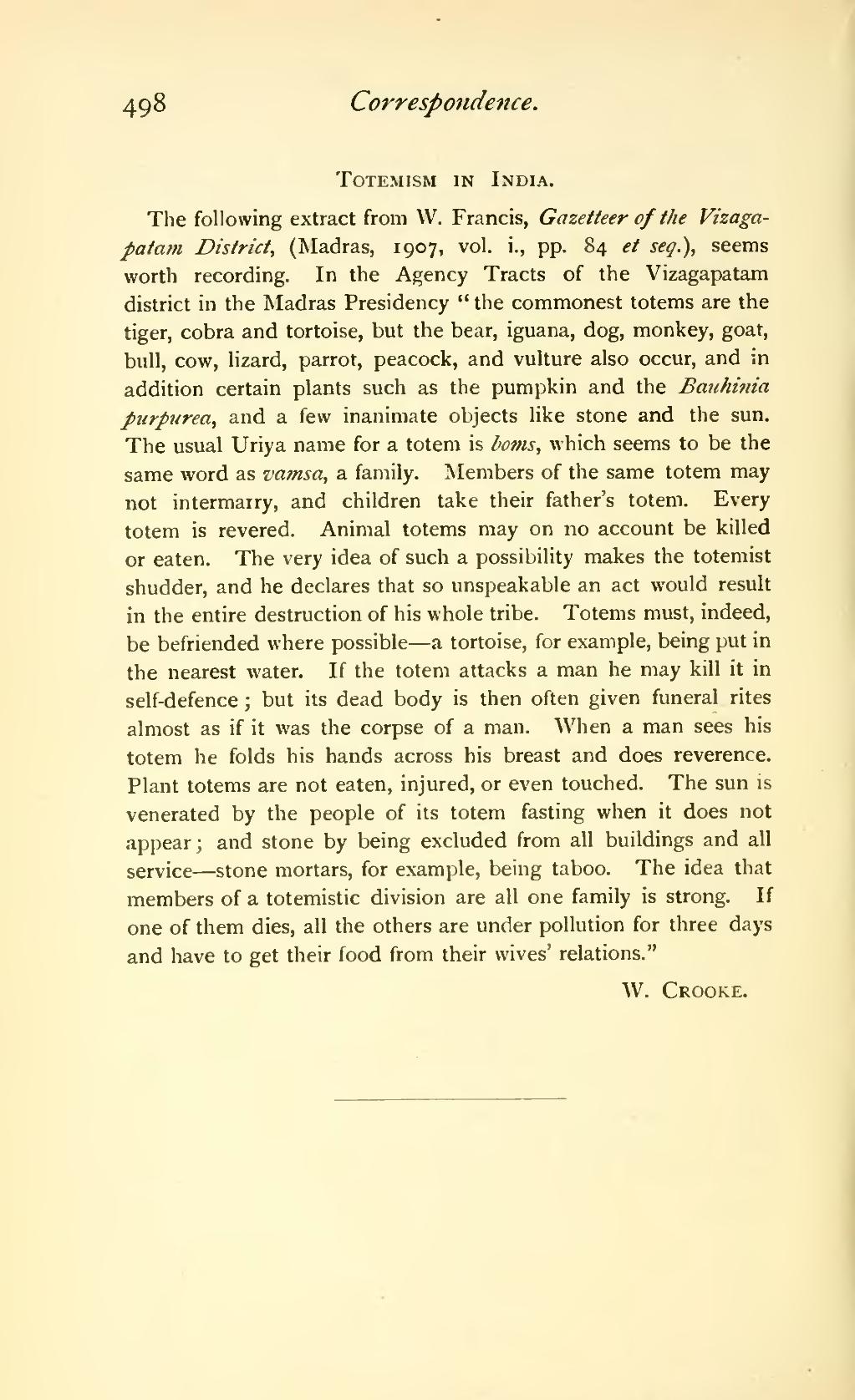498 Correspondence.
ToTEMisM IN India.
The following extract from W. Francis, Gazetteer of the Vizaga- paiafu District, (jNIadras, 1907, vol. i., pp. 84 et seq.), seems worth recording. In the Agency Tracts of the Vizagapatam district in the Madras Presidency " the commonest totems are the tiger, cobra and tortoise, but the bear, iguana, dog, monkey, goat, bull, cow, lizard, parrot, peacock, and vulture also occur, and in addition certain plants such as the pumpkin and the Bauhinia purpurea, and a 'iQ\i inanimate objects like stone and the sun. The usual Uriya name for a totem is horns, which seems to be the same word as va?nsa, a family. Members of the same totem may not intermarry, and children take their father's totem. Every totem is revered. Animal totems may on no account be killed or eaten. The very idea of such a possibility makes the totemist shudder, and he declares that so unspeakable an act would result in the entire destruction of his whole tribe. Totems must, indeed, be befriended where possible — a tortoise, for example, being put in the nearest water. If the totem attacks a man he may kill it in self-defence ; but its dead body is then often given funeral rites almost as if it was the corpse of a man. When a man sees his totem he folds his hands across his breast and does reverence. Plant totems are not eaten, injured, or even touched. The sun is venerated by the people of its totem fasting when it does not appear; and stone by being excluded from all buildings and all service — stone mortars, for example, being taboo. The idea that members of a totemistic division are all one family is strong. If one of them dies, all the others are under pollution for three days and have to get their food from their wives' relations."
W. Crooke.
